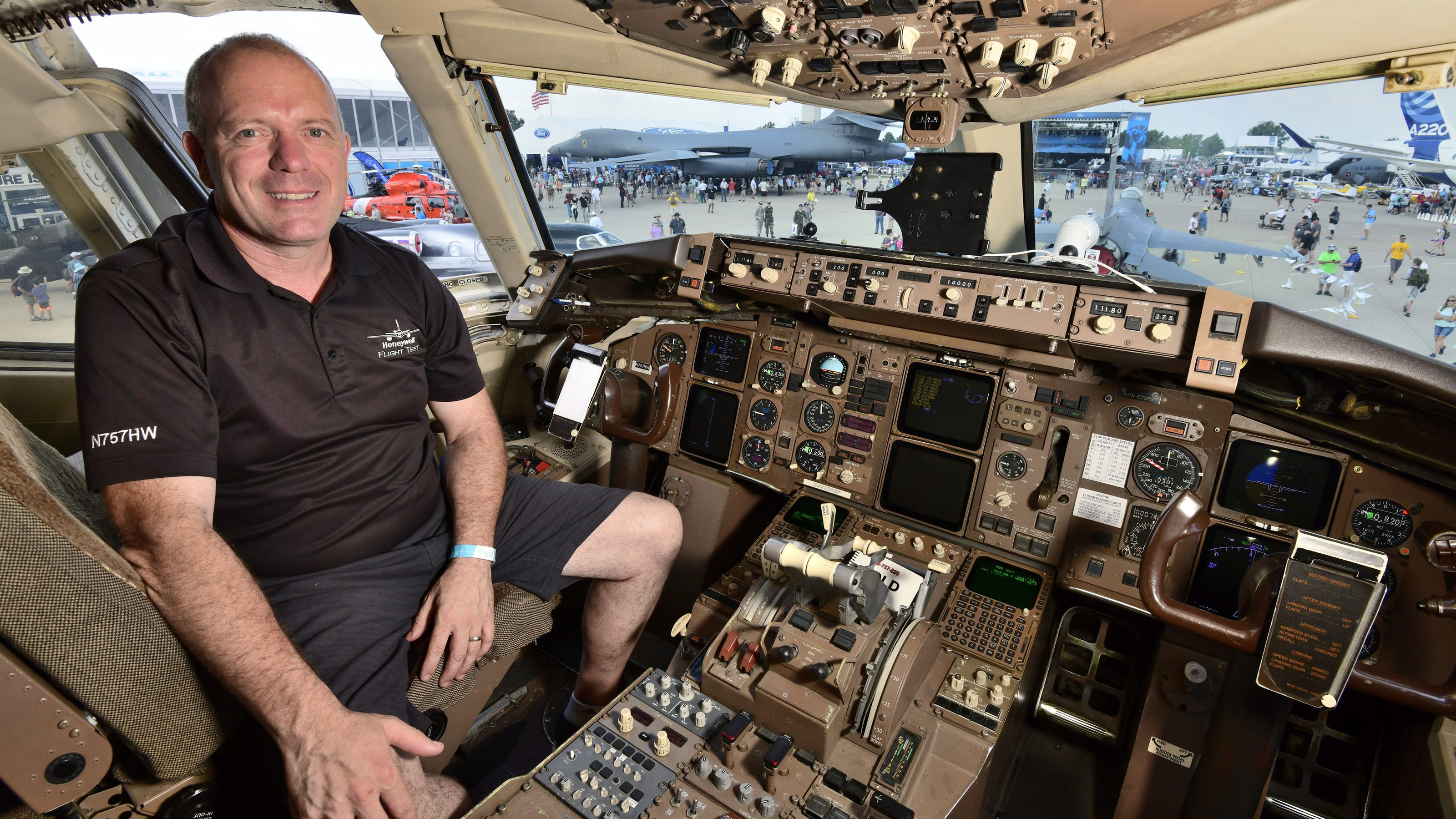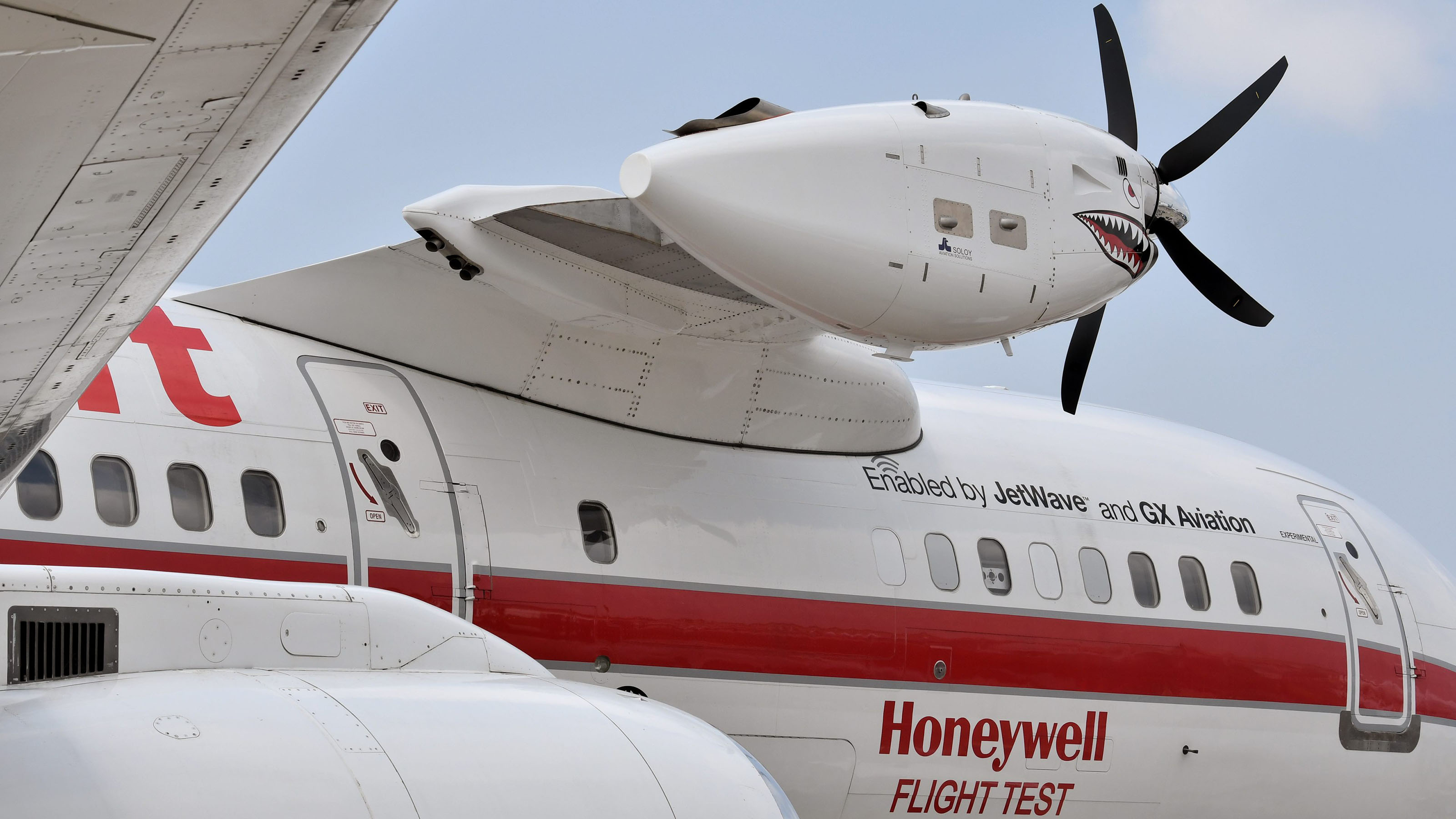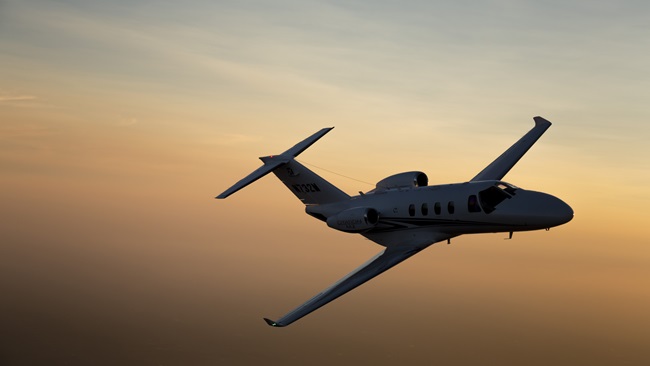Honeywell 757 test bed lands at Oshkosh
Former airliner tests engines, more
A somewhat unusual three-engine Boeing 757—yes, the one with a turboprop engine mounted above the right side of its fuselage—celebrated a couple of special occasions on the Boeing Plaza ramp at EAA AirVenture in Oshkosh, Wisconsin.
First, the largest flying test bed in Honeywell’s fleet marked its first visit to the world’s largest airshow. Second, the jet—in service for the company since October 2008—is testing a turboprop engine for the first time; all of its previous test assignments have involved turbofans. The mostly white jet with a vanity N-number—N757HW—sports an “Experimental” placard beside the cabin entry door. Bold black text painted on the fuselage calls attention to “Our wifi antenna,” “Our wheels & brakes,” and “Our next-gen cockpit technology.”
“We’re testing things from the whole gamut of what Honeywell makes—defense, space, general aviation,” Duval said. And it is used to test more than just engines. For example, when the first Inmarsat satellite was launched, a satellite antenna was installed on the Boeing. “This was the first installation of the JetWave hardware,” he said. Honeywell’s JetWave hardware enables aircraft to connect to Inmarsat’s Global Xpress Ka-band service. The airplane went to Europe for testing, because that was the initial satellite’s coverage area.

“That’s a great example of what we’re doing here, making sure the systems are all working together,” Duval said. At first, he said, the satcom would disconnect after 20 seconds and then reboot. “We don’t have those kinds of problems any more,” he said. “That’s why we exist—to make sure those products are ready for market. There’s only so far you can go with a test in the lab.”
And tests are always piggybacked, Duval said. “The real estate we have on the airplane allows us to test multiple products on every flight.” For example, an engine test requires a specific speed and altitude—so a flight might be shifted to Kansas, where there are storms that can be used to test a new weather radar.
When a new engine is installed for testing, the flight test team has to test themselves first. An initial limitation might be 20,000 feet and 250 knots, and the envelope is then expanded. The process was extensive for Honeywell’s first turboprop test. “Now we understand what our limits are and how the turboprops behave,” he said.

“When we start out the day, the test engine is the first engine we start,” Duval explained. If it doesn’t start or the test equipment doesn’t work, the flight will be canceled. “We will have a profile lined up that usually steps us up in altitude, with specified speeds at each altitude. Then the engineers do their tests.” Test engines are modified with sensors in the engine core, and other test equipment—like water lines if they’re measuring water ingestion—as needed for the specific tests. “Because we can measure everything that goes in and comes out, we can measure performance,” he said.
Other tests can include starting in flight, whether windmilling or an air start. An average flight takes four to five hours, at altitudes up to 45,000 feet—an altitude possible because the airplane is much lighter than most 757s.

N757HW is a Boeing 757-200, the fifth one to come off the assembly line, and it was initially delivered to launch customer Eastern Air Lines. Honeywell acquired it in 2005, but modifications took three years before it entered service. While its cockpit boasts a basic 1982 Boeing panel, in the background it’s running the latest Honeywell RDR 4000 weather radar, flight management systems, ground proximity warning systems, datalinks, and Connected Radar capability—which downloads buffered radar data to dispatchers on the ground, Duval explained. “We can now identify or predict hail or lightning. We’re working on a prediction for high-altitude ice crystals.”
The spartan interior is modular, with a handful of seats and test stations for engineers near the back. Everyone wears military-style oxygen masks during flight tests—because the overhead oxygen masks the airliner once had have been removed. And there’s a separate pitot static system for the back end of the airplane, so that test activities can be completely separated from aircraft systems.
Although N757HW is based at Phoenix Sky Harbor International Airport in Phoenix, you might see it—or hear it on an air traffic control frequency—almost anywhere.





